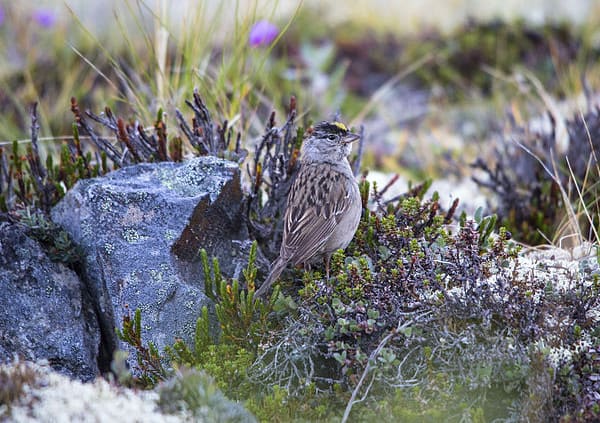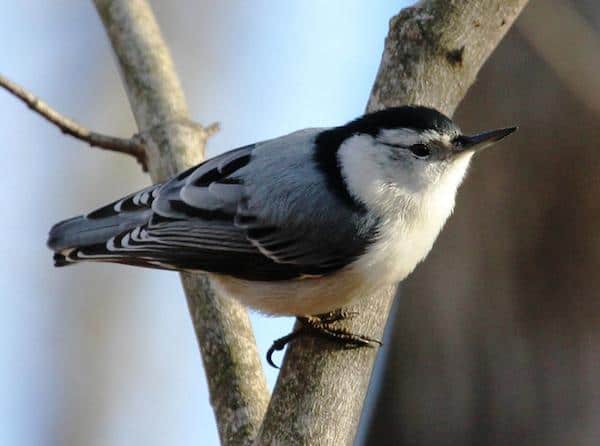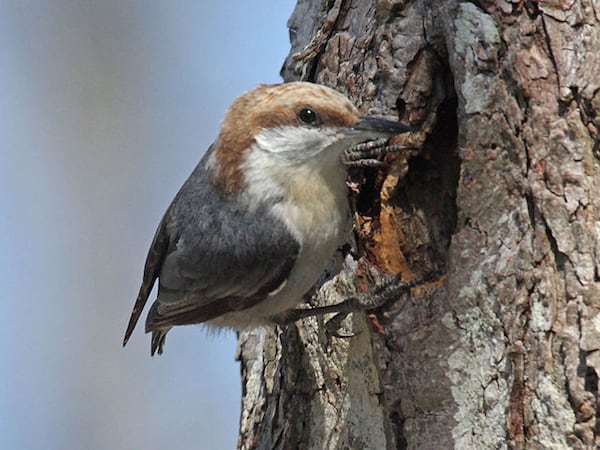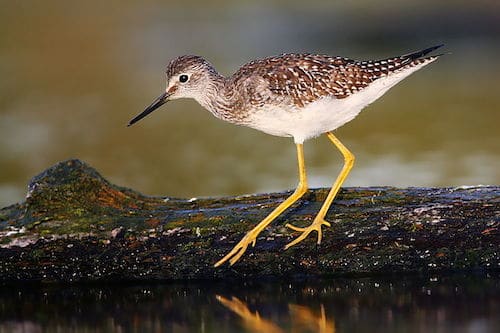Look For
An adult golden-crowned sparrow has a golden crown stripe surrounded by black. Slightly larger than, but very similar to, the white-crowned sparrow, the golden is 7 ¼ inches in length. Sub-adult golden-crowned sparrows can be identified by their plain gray face and grayish bill. Immature birds may have only a hint of the yellow crown and lack the black head stripes.
Listen For
Their song is a sad-sounding whistle: oh dear meeee! Or oh lonely meee! Call is a clear, soft chew!
Find It
The golden-crowned sparrow nests in stunted boreal woods and tundra scrub as far north as the tree line. It winters in dense thickets and underbrush, chaparral, parks, and gardens as far south as the Mexico border. Black-crowned sparrows are often found in mixed flocks with white-crowned sparrows. You will also find them visiting feeding stations for seed scattered on the ground.
Feeding Behavior
Golden-crowned sparrows are omnivores so they feed on a variety of seeds, fruits, buds, flowers, and terrestrial insects. The golden-crowned sparrow got a reputation for destructiveness in the early twentieth century because of its flocking and feeding on vegetables and flowers in gardens and cultivated fields.
Nesting Behavior
The golden-crowned sparrow frequently nests on the ground in low thickets near streams. The nest is a thick cup made up of twigs, moss, bark, ferns, and leaves and lined with fine grasses. They usually lay four to five eggs per brood and the female will incubate for 12 days while the male brings back food for her. The female begins feeding young shortly after the eggs hatch and the male also contributes to feeding nestlings. Nestlings fledge within ten days.
Wow!
In a mixed winter flock of sparrows in the West, the golden-crowns are more likely than other species to stick to the thicker underbrush.




